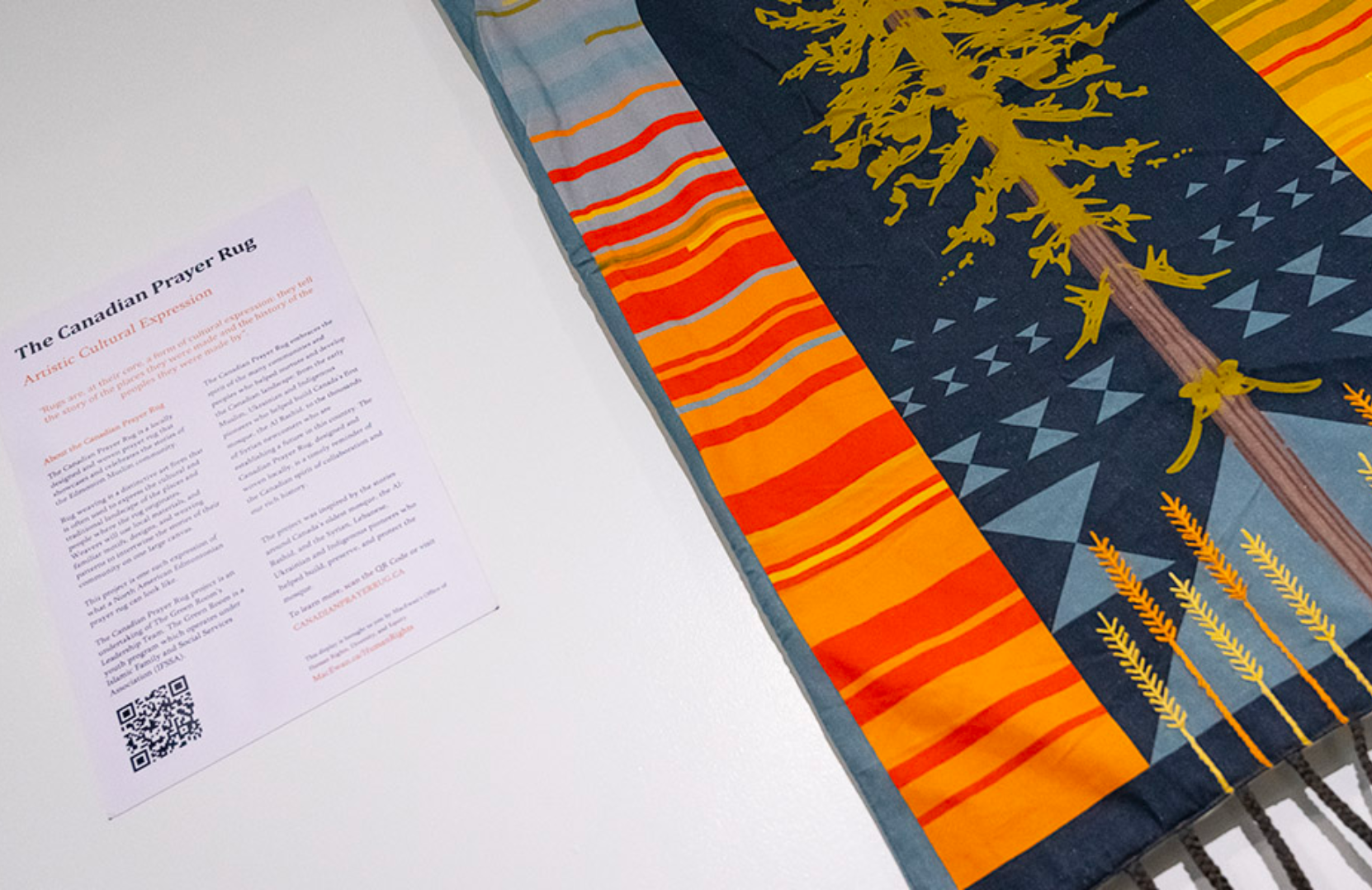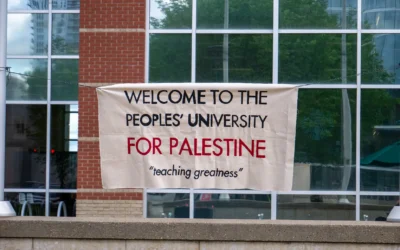During Islamic Heritage Month, MacEwan University hosted the Canadian Prayer Rug in Allard Hall and is looking to make it a permanent fixture at the school. The Canadian Prayer Rug was a collaboration between Indigenous and Muslim communties to help create representation of Canada’s people as they are today. This representation was created through the design features and the collaboration of the rug. Omar Yaqub and Cheryl Whiskeyjack, co-historian laureates for the City of Edmonton, hosted the discussion of the rug on Oct. 11, but the importance of the rug does not end with Islamic Heritage Month. This rug has been created to represent the settlers and the Indigenous population of Alberta. Additionally, this rug was created to start a conversation about faith and incorporating the sacred into everyday life.
Yaqub says, “Wherever I have travelled, I have seen prayer rugs, and each one of those prayer rugs have told a story. They told a story in the materials that made them. They told a story in what they depicted. And in how people (interacted) with them… Everywhere you see rugs that reflect the people. You know, seeing (the prayer rugs) prompted the question of what would something that reflects our home look like.”
This prayer rug was designed to represent Alberta. The moons and archway featured on the Canadian Prayer rug represent the Al Rashid Mosque located in Fort Edmonton Park. As the Canadian Prayer Rug website says, “the Al Rashid is a symbol of unity and solidarity for the Edmonton community” because it was founded by members of all monotheistic faiths. It resembles a Russian Orthodox church and was designed by a Ukrainian-Canadian architect. The prayer rug also features a lodgepole pine — Alberta’s official tree — and mimics trees found on traditional prayer rugs from Syria; wheat, which represents abundance and Alberta’s prairies; and has shifts of colour in the background, which represent the four seasons and pays homage to the four cardinal directions. The rug also features blue triangles, which represent the Rocky Mountains and the flow of the North Saskatchewan River.
The rug was a project created by the Green Room’s Leadership Team, which is a youth program under the Islamic Family and Social Services Association. The Canadian Prayer Rug website credits the creation of the rug to a local Métis designer and a Muslim weaver, but Yaqub gives credit to everyone who helped conceptualize the rug. The process of creating this rug was labour intensive. It involved interviewing the community, getting a grant, getting support from the heritage council, and researching the Al Rashid Mosque. Everyone who did research gave the Métis designer something to draw inspiration from so the Muslim weaver could create the rug to reflect the land and people of the land. Yaqub compares the creation of the rug akin to the set of a movie: “A designer is somewhat similar to an actor in a movie…. You can put Tom Cruise in a movie, but the movie could still suck.”
Whiskeyjack said the rug was created to “start a conversation and keep it going,” about speaking about faith and including the sacred in everyday life. Whiskeyjack and Yaqub say that incorporating the sacred into everyday life can be as simple as starting your day with intention, and for many people, this means beginning the day with prayer. Despite faith and prayer being an integral part of many people’s identities, this is often taboo to speak about, but Whiskeyjack says, “They pray in Arabic, and I don’t understand it, but I feel it.” Even though she doesn’t understand the words or language that is being said, she does feel the understanding of prayer and this can become a way to connect with other people, rather than cause division.
MacEwan plans to make the rug a permanent fixture in the multi-faith room on campus. For future projects, the Islamic Family is also looking to contemporize the Treaty 6 medallion, to also represent the people who currently live on Treaty 6 territory because many do not identify with the people depicted on the medallion.
Yaqub would love to see more people inspired to create their own prayer rugs or their own versions of representing themselves in Canadian culture. The Canadian prayer rug is one way to beautify Canadian identity, he says. As the prayer rug’s website says, “the Canadian Prayer Rug is an inspiration for young people and communities across the country and continent to further explore their stories and their roots, and proudly be producers of Muslim Canadian culture that authenticates and validates the lived experiences and realities of Canadian Muslim communities.”





What a great way to connect people from various faiths and backgrounds. I love that people of different faiths can come together and see their similarities and celebrate their differences. Excellent, well written, inspirational and informative article. I felt connected to the prayer rug creators as their perspectives were so eloquently presented.